Have you ever looked through antique or vintage needlework catalogues? I highly recommend it–they are a treasure trove of information and inspiration.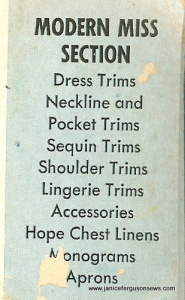
The Simplicity Needlework Catalogue from 1947, shown above, is one of my favorites. Stitchers of that time were not so different from those of today.
The subject tabs show the topics to be very similar to the topics included in contemporary needlework magazines and pattern books.

“…Pick a basket full of colorful flowers to add a dainty touch to your trousseau linens–they’re just the thing to give as gifts…”
Aside from the value of dating a pattern or style of embroidery, the catalogues are a rich source of designs applicable to machine or hand embroidery today.  Â
No longer is it necessary to use iron on transfers. With scanners and copy machines, images can be copied and resized then converted into machine embroidery designs. These could easily be converted to modern projects for this old fashioned Nana! Patterns in this section included stuffed toys, delicate embroidery designs and baby quilts.

“Designed especially for baby–ever so dainty– motifs to dress up little crib or carriage pillowcases.”
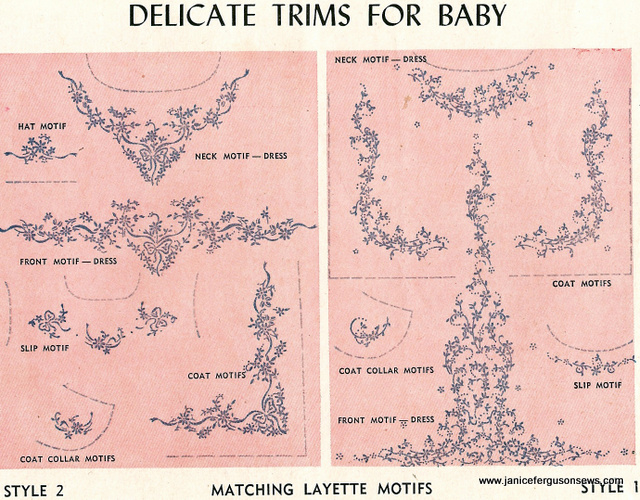
“Delicate matching sprays designed for layettes. Style 1 is ideal for christening outfit. Worked in delicate shades of baby pink of blue on white or the ever popular white on white.”
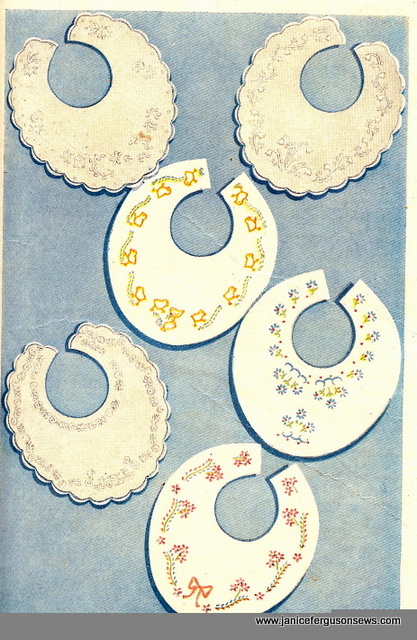
“Tuck a bib under their chin and let the crumbs fall where they may. You’ll enjoy making these bibs and want to make several they are ideal as gifts.”
I found it interesting that in 1947 an equal amount of 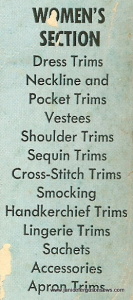 smocking–2 pages– was included in the women’s and children’s section.
smocking–2 pages– was included in the women’s and children’s section.
Also included were designs for trapunto as well as handkerchiefs and lingerie trims. Aprons and monograms were prominently displayed while neckline and pocket embroideries were promoted. Soutache and Chinese accents for dress trims reflected the fashion of the day. There were a great many cross stitch patterns in the women’s section as well as others. Apparently, it was a popular embellishment at that time.
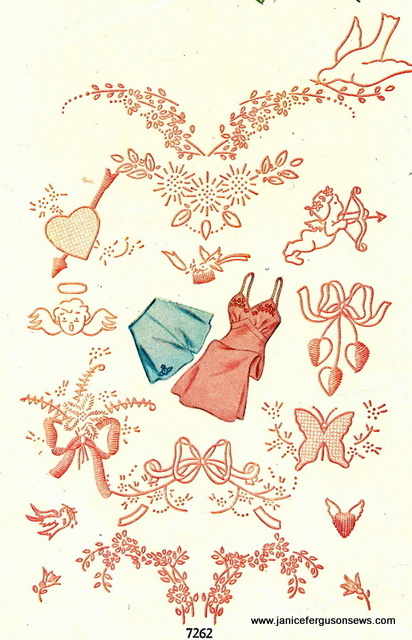
“Designed to trim dainty lingerie–these winged hearts, angels, doves, cupids and many lovely floral sprays will add a touch of loveliness to your lingerie. They are ideal for your hope chest and as gifts for your “just engaged” friends.
The household section featured quilted bridge table covers–now that is something I have not seen in current pattern books. Another needlework project no longer popular was “chair back sets,” also known as antimacassars:
definition: a small decorative cloth, often crochet, for the backs and arms of chairs and settees, originally intended as a protection against soiling from macassar oil, a compound oil from Indonesia used by men in the 19th and early 20th centuries as a  hair oil.Â
Do you remember the Man of Constant Sorrow, Ulysses Everett McGill {George Cluny} and his fixation on his hair tonic?
The other items in this section were much like designs  you would find in Sew Beautiful magazine. Floral monogram frames, more guest towels, sheets and pillow cases, placemats and napkins.
These berry designs really appealed to me.
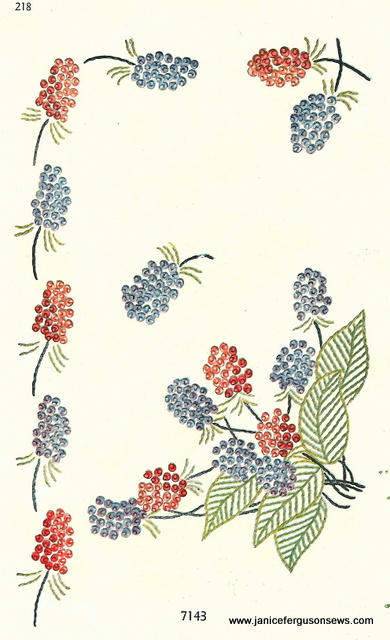
“..graceful berries formed by French Knot clusters with graceful leavs worked in simple Outline Stitch. Designed to border or to be scattered over place mats, natpkins, runneers and luncheon cloths. also delightful as dress trims.”
But cutwork seemed to be the most popular home dec technique, at least as evidenced by the number of designs included in this catalogue.
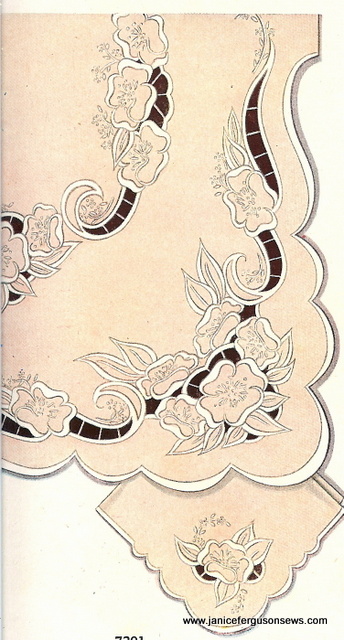
“For more formal serving, what is more appropriate than a lovely cutwork cloth? It’s just what you’ve always wanted to own–and so simple to embroider.

“…Cutwork always adds so much to your towels and cases and these are especially designed to be easy to embroider, mainly in Buttonhole Stitch….”
This is probably waaaaay more than you wanted to see from my 1947 Simplicity Needlework Catalogue, but I have a hard time not showing all these beauties.
Aside from the inspiration and information found in this Simplicity volume, it reconfirmed my long held belief that those of us who take up the needle, be it hand or machine, are not so different from the women who have gone before us. They have left behind evidence of their pursuit of beauty in fabric and thread.  No doubt, we will do the same.
P.S. Is it charming the way the Simplicity folk have elevated stitch names to proper nouns, worthy of capitalization–or just wrong and annoying?





2 responses to “Antique Needlework Catalogue”